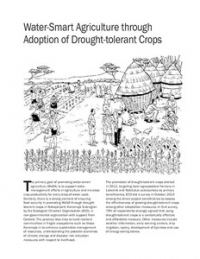This post is written in response to: sustainable intensification of agriculture: oxymoron or real deal?
If sustainable intensification is possible (and I’d like to think that it is), one thing is clear: it requires investment. That investment may be in the form of new infrastructure, technologies, inputs, time, labor, or knowledge, but whatever the form there is a cost. The key question is, who will bear that cost?
One important avenue for intensification of agricultural production worldwide, has been through irrigation. Unfortunately, governments—who have historically been the largest investors in surface irrigation—rarely have the funds available, especially in Sub-Saharan Africa. Development assistance for irrigation projects has picked up in the last 15 years after falling substantially in the 1980s and 1990s, but the rate is still slow. Projections say that under current investment levels, the share of cultivated land that will be irrigated in sub-Saharan Africa would only increase to 8% by 2050, up from 4% in 2000.
So where will the resources come from? Public-private partnerships (PPPs) that include joint planning and risk/benefit-sharing of irrigation development between the state and private sector investors seem to be all the rage now. It’s a way of bringing in large-scale investment funds and know-how to irrigation development. But do these work?
An ongoing study of PPPs in Tanzania and Ghana shows that PPPs are not a panacea. Among serious concerns:
- Medium- to large-scale irrigation projects require a lot of data on land and water resources (along with climatic variability and change) which is often unavailable
- Project development disrupts customary land and water rights
- It is difficult to align public development objectives with private-sector, for-profit objectives
- Decisions are often taken without meaningful input from those who are most affected, including existing smallholders, women, and youth who oftentimes have the largest investment or stake in the outcome.
- Just developing irrigation infrastructure is insufficient; key input and output support, such as markets are also needed
- Real partnerships require building trust among government, investors, and local residents, which takes time and effort
We particularly should not ignore the potential of smallholders themselves as investors. The key question is what will enable them to be able to make investments in sustainable intensification?

















Add new comment